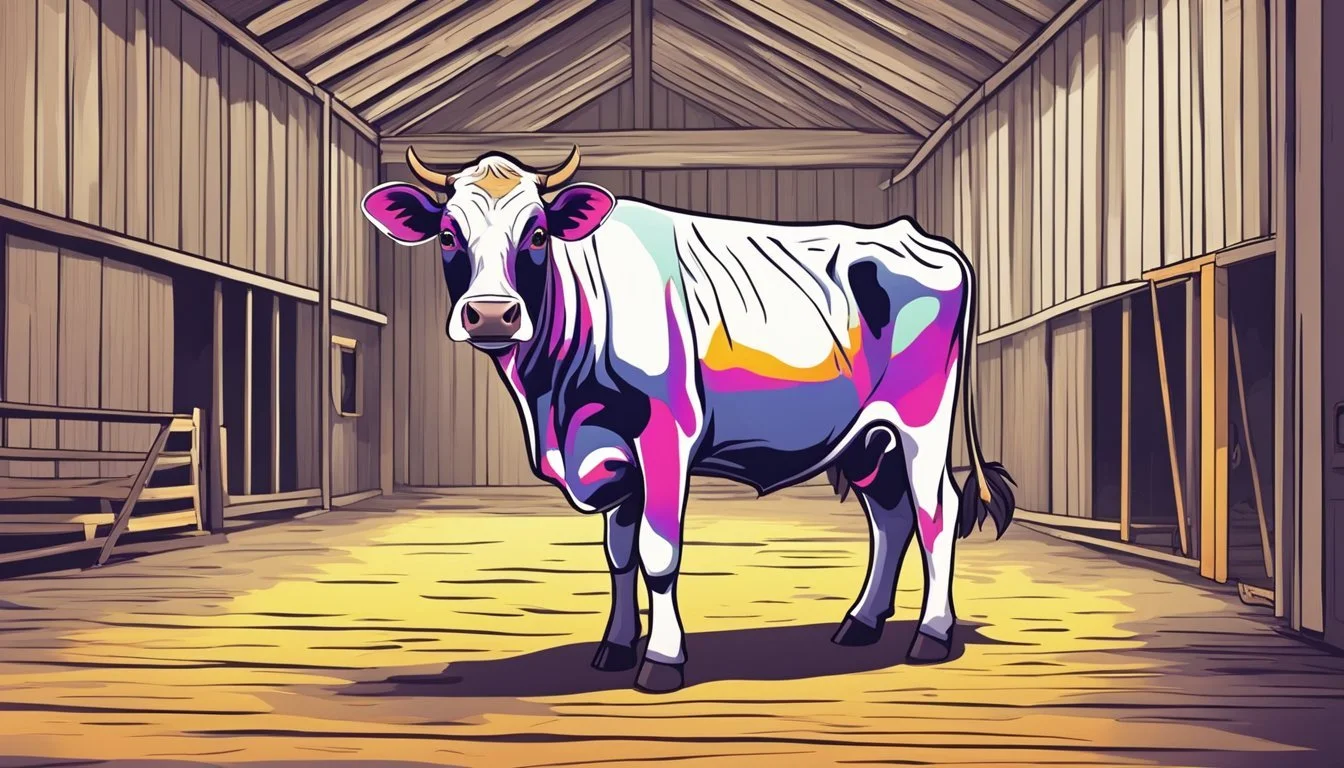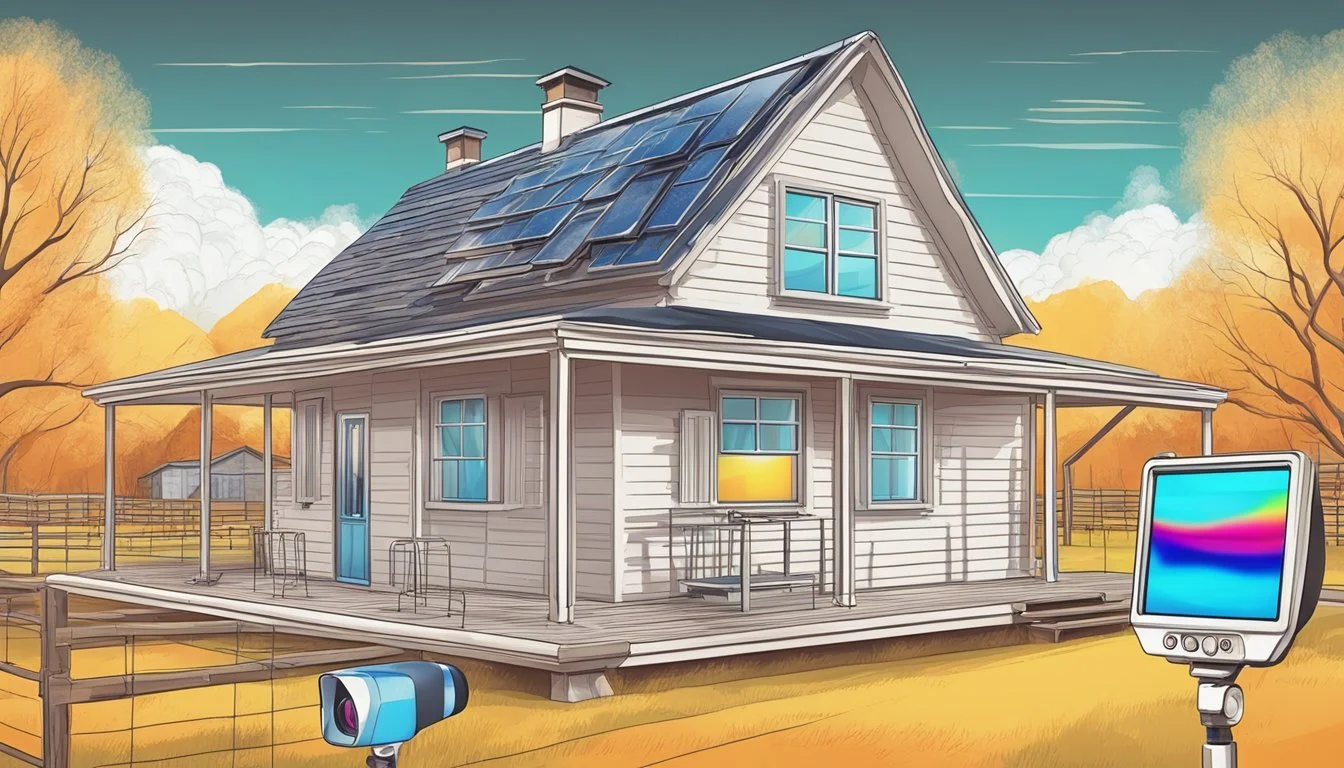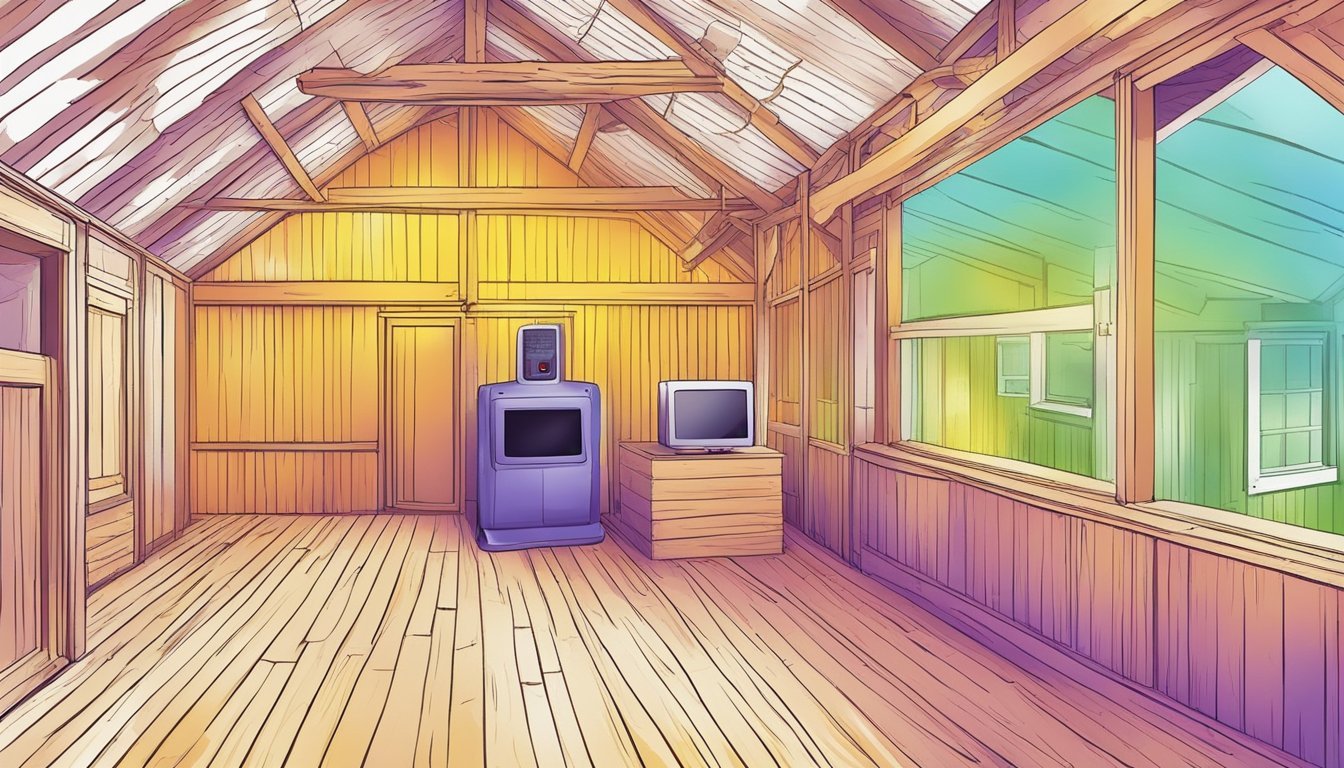How to Use a Thermal Imaging Camera
Unveiling Heat Loss and Enhancing Animal Health on Homesteads
On a homestead, maintaining efficient energy use and ensuring the health of animals are crucial tasks. A thermal imaging camera becomes an invaluable tool in this context. It detects temperature differences in the environment, which is essential for identifying heat loss in buildings and monitoring the well-being of livestock. By capturing thermal images, homesteaders can visualize heat distribution and discover areas where insulation might be lacking, helping them to address issues that could lead to increased energy costs.
Thermal imaging also extends into the realm of animal health monitoring. It allows for non-invasive checks on livestock, identifying elevated body temperatures which can be indicative of illness or injury. This early detection can help in administering timely treatments and preventing the spread of disease within the animal population. The camera reveals the heat signature of animals, giving a clear picture without the need for physical contact, which is particularly useful for animals that may be stressed by human interaction.
Homesteaders can use the information provided by thermal imaging to make informed decisions about energy conservation strategies and health interventions. A thermal image offers a unique perspective that is not visible to the naked eye, making it a critical component in the toolkit for managing a sustainable and health-conscious homestead.
Understanding Thermal Imaging
Thermal imaging is a powerful technique that translates infrared energy from objects into visual thermal images, allowing detection of heat loss and monitoring animal health with precision.
Thermal Imaging Basics
A thermal camera detects infrared energy and converts it into an electronic signal, which is then processed to produce thermal images on a screen. These images represent temperature variations, visually depicting heat signatures. The cameras vary by features, but models like the FLIR One Edge Pro offer advanced capabilities for diverse applications.
Infrared Energy: Captured by the thermal sensor.
Thermal Images: Visual representation of temperature data.
Comparing Thermal Imaging Cameras and Regular Cameras
While a regular camera captures visible light to create an image, a thermal imaging camera specifically captures infrared radiation emitted as thermal energy from objects. Regular cameras rely on reflected light and cannot detect temperature variations. In contrast, thermal cameras visualize heat signatures regardless of lighting conditions.
Regular Cameras: Capture light visible to the human eye.
Thermal Cameras: Capture infrared energy not visible to the human eye.
Importance of Resolution and Sensitivity in Thermal Cameras
Resolution and sensitivity are crucial in thermal cameras. Higher resolution provides more detailed thermal images, which is important for identifying specific areas of heat loss or detecting subtle temperature differences in animals. Sensitivity, on the other hand, determines the camera's ability to detect minute temperature differences, which can be a vital factor in accurate health monitoring.
Resolution: Measured in pixels; higher values mean more image detail.
Sensitivity: The smallest temperature difference a camera can detect.
Resolution: Importance - Higher resolution captures finer details in thermal images.
Sensitivity: Importance - Greater sensitivity allows detection of small temperature changes.
By understanding these thermal imaging fundamentals, you can effectively employ a thermal camera like the FLIR One Edge Pro for tasks such as heat loss detection and animal health monitoring on your homestead.
Heat Loss Detection in Buildings
Thermal imaging cameras provide a powerful means for homeowners and inspectors to identify areas of heat loss in buildings. By revealing temperature differences visually, these cameras highlight problem areas where energy efficiency can be improved, often resulting in lower energy bills.
Identifying Heat Loss Through Windows and Doors
Windows and Doors: Key Points for Inspection
Airflow Leaks: Gaps or failing seals around windows and doors can allow warm air to escape, creating cold drafts and increasing heating requirements.
Temperature Variances: Large temperature differences near windows and doors suggest potential energy leaks and inadequate sealing.
Inspection Approach:
Calibrate the thermal imaging camera to the indoor and outdoor temperatures.
Scan around windows and doors for cold spots; areas presenting blue or purple hues are typically cooler, indicating possible leaks.
Preventive Measures: Enhance sealing with weather-stripping and address any condensation issues, as they can both signify and cause energy inefficiency.
Inspecting Insulation and Energy Efficiency
Insulation and Energy Efficiency: Core Inspection Areas
Walls and Roofs: Look for inconsistency in color patterns, indicating areas where insulation may be lacking.
Loft Hatch: A common site of heat loss, often overlooked when inspecting for insulation quality.
Inspection Steps:
Analyze walls, roofs, and the loft hatch for irregular thermal patterns, such as fuzzy-edged shapes or streaks.
Drafts and Leaks: Use the camera to trace the source of drafts, which may lead to hidden leaks or poorly insulated areas.
Addressing Inefficiencies: Implement additional insulation in the poorly insulated areas and reinforce the energy efficiency of the building structure by sealing any identified leaks.
Applications in Animal Health Monitoring
Thermal imaging cameras serve as critical tools for monitoring the health and well-being of animals by detecting variations in heat emissions. They are indispensable for both routine healthcare maintenance and early detection of potential health issues.
Maximizing Livestock Health and Preventative Measures
Farmers utilize thermal imaging to ensure the comfort and safety of their livestock, which is vital for a successful agricultural enterprise. These cameras reveal temperature differences on animals' bodies, indicating areas of inflammation or abnormal heat patterns. Early detection of such anomalies allows for prompt veterinary care, reducing the risk of widespread illness within a herd. This is not only a measure of good animal husbandry but also economically beneficial, as it diminishes the chances of loss due to disease outbreaks.
Preventative measures are paramount in livestock health maintenance. Thermal imaging assists in monitoring the effectiveness of animal housing, ensuring that it provides adequate heat during cold weather. By doing so, farmers can prevent cold stress, which can compromise the immune system of animals and lead to illness.
Using Thermal Imaging for Wildlife Research and Surveillance
Researchers and conservationists apply thermal imaging cameras for non-invasive wildlife research and surveillance. These devices allow observation of animals in their natural habitat, particularly during nocturnal hours when many species are most active. Thermal cameras excel in detecting animals hidden in their environments, aiding in population counts, behavioral studies, and even fire detection in the wild.
In wildlife health monitoring, thermal cameras help identify injured or diseased animals by spotting abnormal heat patterns from a safe distance, thus ensuring the safety of both the animals and the researchers. Surveillance with thermal imaging is a cornerstone in preserving endangered species, as it enables continual monitoring without disrupting their natural behavior, which is crucial for their comfort and well-being.
Operational Techniques and Best Practices
Using a thermal imaging camera effectively for heat loss detection and animal health monitoring is a combination of proper handling, accurate calibration, and regular maintenance. These best practices ensure that the technology serves as a preventative tool for sustainability and efficient HVAC maintenance on your homestead.
Proper Handling and Maintenance of Thermal Imaging Cameras
To maintain accuracy and prolong the life of a thermal camera, professional handling and maintenance are crucial. Firstly, it is imperative to store the camera in a clean, dry environment to prevent potential damages. Secondly, regular firmware updates are essential to leverage enhancements in technology and ensure that the device operates at its best.
Handling: Always use both hands and keep the thermal camera steady during operation.
Storage: Store in a protective case at room temperature and low humidity.
Firmware Updates: Check the manufacturer’s website frequently for firmware updates.
Calibrating for Accurate Temperature Readings
Calibration is a vital step that should not be overlooked if high levels of accuracy are to be achieved. Prior to use on your homestead, ensure the thermal camera is calibrated according to the manufacturer’s specifications. Utilizing built-in calibration settings can often suffice; however, for more complex applications, professional calibration may be needed.
Built-in Calibration: Use this feature for routine checks to adjust the camera's settings.
Professional Calibration: Should be done annually or as recommended by the manufacturer.
Preventative Maintenance Through Regular Checks
Lastly, routine checks act as preventative maintenance, contributing to the sustainability of a thermal camera and avoiding costly repairs. Regular health checks of the camera, including battery life, lens cleanliness, and overall condition of accessories, support continued accurate function.
Battery Inspection: Ensure the battery is charged and in good condition before use.
Lens Cleaning: Use a soft cloth to clean the lens, avoid scratches that could affect readings.
Accessory Checks: Inspect all components for wear and replace as necessary.
By adhering to these operational techniques and best practices, a thermal imaging camera can become an invaluable asset on a homestead for managing heat loss and monitoring animal health efficiently and effectively.
Integrating with Modern Technology
Integrating thermal imaging cameras with modern technology allows for enhanced versatility and convenience in detecting heat loss and monitoring animal health on homesteads.
Smartphone-Compatible Thermal Imaging Options
Thermal imaging technology has expanded its reach with smartphone-compatible devices. These compact cameras can be attached to a smartphone, leveraging the phone's display and processing power. Users benefit from the convenience of a smartphone app that enables quick analysis and sharing of thermal data.
Examples:
Smartphone thermal camera attachments
Dedicated apps for image processing
The Advantages of Connectivity: Bluetooth, USB, and WiFi
Connectivity is crucial for efficient thermal image transfer and analysis. With Bluetooth and WiFi, cameras can wirelessly transmit data to other devices, which streamlines workflow on a homestead. USB connections provide a reliable and fast method for transferring images to computers for further analysis.
Connectivity Types:
Bluetooth: Wirelessly pairs with other devices
WiFi: Enables live streaming and remote data access
USB: Secures a fast and stable connection for data transfer
Economic Considerations
In the context of managing a homestead, the utilization of a thermal imaging camera for detecting heat loss and monitoring animal health can lead to direct economic benefits. Owners should consider both the upfront equipment cost and the potential for energy savings. Additionally, understanding the financial implications tied to HVAC systems can influence long-term cost management strategies on the property.
Cost Effectiveness and Energy Savings
Initial Investment: Purchasing a thermal imaging camera represents an upfront cost; however, this equipment is an investment in energy efficiency. By identifying areas of heat loss, property owners can take remedial action to insulate their homes more effectively, leading to reduced energy bills.
Energy Bills: Properly addressing the heat loss detected can significantly lower heating costs.
Energy Savings: Proactive maintenance facilitated by thermal imaging can help avert the inefficient use of energy, amplifying savings over time.
Average Cost for HVAC Replacement and Inspection
HVAC Replacement Costs: The average cost for HVAC replacement varies widely based on the size and type of the system, generally ranging between $4,500 and $12,000.
Inspection Costs: Regular HVAC inspections, which can help extend the life of a system and maintain efficiency, add to operational costs. These typically range from $150 to $500 annually.
Operational Costs: Using thermal imaging cameras for routine checks could mitigate these costs by pinpointing issues early.
Equipment Cost: Compared to the potential cost of a full HVAC replacement, the investment in a thermal imaging camera may offer substantial savings in the long run.
Addressing Environmental and Seasonal Factors
When utilizing a thermal imaging camera for heat loss detection and monitoring animal health, one must account for the varying temperature ranges and environmental conditions that can affect the readings, as well as the challenges presented by condensation and moisture.
Impact of Temperature Range and Environmental Conditions
Temperature Range: The effectiveness of a thermal imaging camera is influenced by the environmental temperature. For accurate heat loss detection, one should perform assessments during cooler times, either early in the morning or late in the evening, to prevent solar radiation from skewing results. When monitoring animal health, it's equally important to understand the normal body temperature range of the species under observation, as deviations can indicate health concerns.
Summer: High ambient temperatures can mask heat loss; therefore, repairs should be planned for cooler seasons.
Winter: Cold environments are ideal for identifying heat loss but can also lead to ice dams, which should be watched for signs of water damage.
Environmental Comfort: Adjusting air exchange systems can enhance environmental comfort within the homestead without compromising energy efficiency, as revealed by thermal imaging.
Dealing with Challenges of Condensation and Moisture
Condensation and Moisture: Thermal imaging can detect areas where condensation and moisture may accumulate, which are potential sites for mold growth and water damage.
Visual Indicators: Cold surfaces on the camera screen often appear as potential moisture-prone areas, necessitating further investigation.
Mitigation Techniques:
Insulation: Proper insulation can minimize condensation by maintaining surface temperatures above the dew point.
Ventilation: Enhanced ventilation can reduce moisture buildup, mitigating the risk of condensation-related issues.
Case Studies and Field Applications
Thermal imaging technology has proven to be an invaluable asset across various sectors. Specific case studies in building inspections and emergency services have showcased the versatility of thermal cameras in detecting heat loss and aiding firefighting efforts.
Examples of Thermal Imaging in Building Inspections
Builders and inspectors widely use thermal imaging cameras to detect heat loss in residential and commercial structures. During an HVAC inspection, thermal cameras can reveal areas where insulation is lacking, by showing cooler spots on the camera's display against a warmer background. For example, Teledyne FLIR's thermal imaging cameras have become essential tools in construction, allowing inspectors to visually identify problem areas without invasive measures. By comparing temperature readings across surfaces, anomalies are detected, which indicate potential energy leaks that can be promptly addressed.
Key Benefits in Building Inspections:
Energy Efficiency: Identification of heat loss areas leads to better insulation, ultimately enhancing energy efficiency.
Cost-Effective: Early detection of insulation flaws can result in lower heating and cooling costs.
Significance in Emergency Services like Firefighting
Firefighters utilize thermal imaging cameras to see through smoke, allowing them to locate individuals trapped in structures and to identify hotspots invisible to the naked eye. These cameras have become a critical component in a firefighter's arsenal. In dense smoke conditions, thermal imaging can delineate paths of egress and ingress, aiding in safer, more strategic navigation. They also play a crucial role in post-extinguishment checks, ensuring that no residual heat pockets remain that could reignite the fire. Thermal cameras thus not only enhance rescue operations but significantly improve the safety of firefighters during and after an incident.
Highlighted Uses in Firefighting:
Victim Location: Quick detection of body heat signatures leads to faster rescue of individuals.
Hotspot Identification: Firefighters identify and monitor fire-affected areas, preventing fire spread and re-ignition.
Future Trends in Thermal Imaging
The thermal imaging sector is rapidly evolving, driven by technological advancements and increasing market demand. These trends are setting the stage for more sophisticated, accessible thermal imaging solutions.
Innovations and Market Development
The market for thermal imaging is experiencing substantial growth with a focus on integrating advanced features while maintaining affordability. Innovations are primarily centered around enhancing image resolution and sensitivity of infrared cameras. Intelligent analysis capabilities facilitated by artificial intelligence (AI) are being incorporated directly into cameras, offering smarter image processing. Moreover, the miniaturization of components is making devices more portable, thus broadening their practical applications, from heat loss detection in buildings to monitoring the well-being of animals on a homestead.
In terms of market development, there is a visible surge in demand across various sectors, including agriculture, healthcare, and industrial monitoring. Companies are responding by diversifying their product range to cater to specific application needs, infusing thermal cameras with more advanced features such as higher frame rates and improved spectral ranges. The objective is to offer users a more comprehensive thermal imaging experience that can detect subtle temperature variations, which is critical for accurate heat loss analysis and animal health surveillance.
Impact of Pandemics on Healthcare Monitoring
The onset of the COVID-19 pandemic has underscored the role of non-invasive monitoring tools in healthcare. Thermal imaging has stepped into the spotlight as a valuable asset in detecting elevated body temperatures, a common symptom of viral infections. Healthcare providers are increasingly using infrared cameras to perform quick scans of individuals, effectively minimizing contact and the potential spread of viruses.
Moving forward, the use of thermal images for healthcare monitoring is expected to remain prominent as the technology becomes more refined. Emphasis is being placed on enhancing the precision and speed of thermal data capture, as this delivers immediate benefits for epidemic control and routine health assessments. The development of thermal imaging platforms that can be integrated into public access points, such as transportation hubs and hospital entrances, is indicative of the long-term impact pandemics have on surveillance technology within the healthcare industry.








